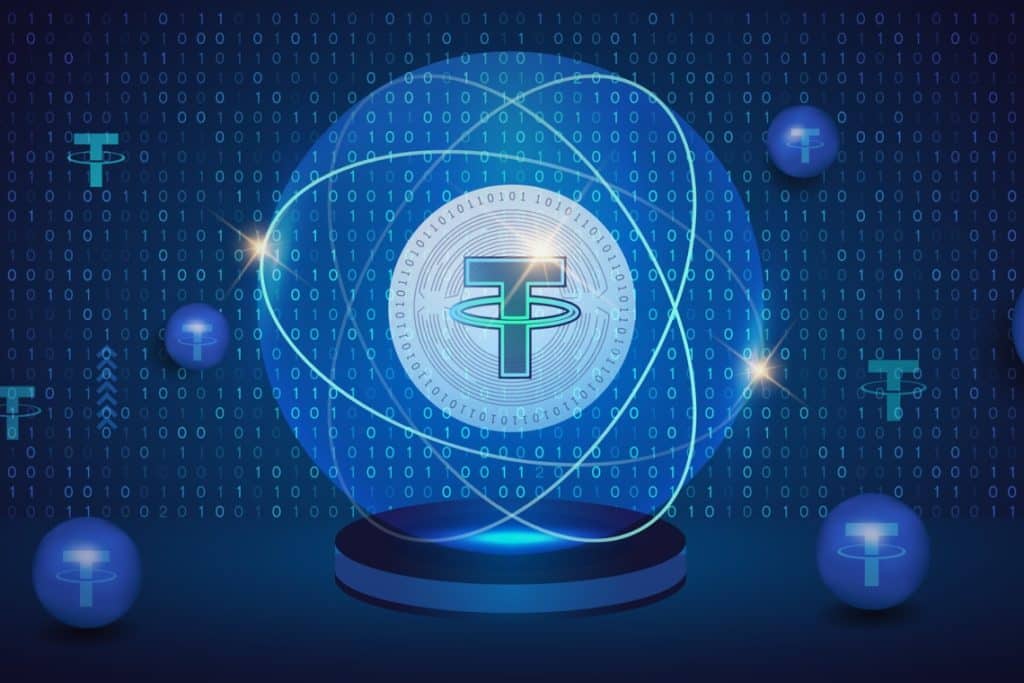
Recently, important news surrounds the crypto Tether, the stablecoin pegged to the US dollar. Specifically, it was discovered that the Alameda wallet was exchanging bits of ERC-20s for Ether (ETH)/Tether (USDT), so ETH and USDT were channeled through exchanges and instant mixers.
In addition, crypto wallets associated with the now-bankrupt trading company Alameda Research, the FTX subsidiary, were seen transferring funds just days after the former CEO, Sam Bankman Fried, was released on a $250 million bailout.
All the secrets behind Alameda: not only Tether crypto
The transfer of funds from Alameda wallets has aroused the community’s curiosity, but especially the way these funds were transferred has attracted the attention of experts. In fact, as already anticipated, more than anything else it arouses suspicion about how Alameda exchanged bits of ERC-20s, among others, with crypto Tether (USDT).
The suspicious news is also reported by ErgoBTC’s Twitter account, which reads:
Alameda ETH addresses are digging around in the sofa for spare change and swapping bits ERC20s for ETH/USDT.
ETH and USDT then funneled through instant exchangers.
Rings some major alarm bells…https://t.co/GRVtChDL9rhttps://t.co/LJBi7cuFZLhttps://t.co/nxcXWgm5VO pic.twitter.com/AqcgxVRoMr
— 🏴∴Ergo∴🏴 (@ErgoBTC) December 28, 2022
For example, a wallet address starting with 0x64e9 received over 600 ETH from wallets belonging to Alameda, part of it was exchanged for USDT while the other part of the transaction was sent to ChangeNow.
On-chain analyst, ZachXBT, noted that Alameda’s wallet was eventually exchanging funds for Bitcoin (BTC) using decentralized exchanges such as FixedFloat and ChangeNow. Of note is the fact that these platforms are often used by hackers and exploiters to hide their transaction paths.
Several hypotheses about Bankman-Fried and FTX
The never-ending FTX saga sees a new twist every day. Specifically, the latest transfer of funds to collect everything left in his crypto wallets turns out to be troubling for the community.
Indeed, at first, many had speculated that the way these funds were being exchanged resembled an exploiter. Now, as Bankman-Fried’s criminal past has come to light, many think it could be an inside job to get rid of everything left in those wallets.
While there are others who questioned the conditions of the bail and asked why SBF was given access to the Internet. One user in particular wrote that the former CEO was desperately trying to funnel money because his bail condition did not include computer/internet access.
In any case, the ongoing movement of funds from Alameda wallets coincided with Bankman Fried’s bail, because soon after FTX filed for bankruptcy on 11 November, exchange wallets were hacked for millions of dollars.
In fact, the US Department of Justice is currently investigating the $352 million FTX exploit that occurred immediately after the bankruptcy filing.
More news for the Tether crypto: Japan lifts ban on stablecoins
Another piece of news in the last few hours concerning crypto Tether takes a look at the situation in Japan. In fact, Japan itself has apparently lifted its ban on the use of foreign stablecoins for 2023.
Currently, none of the 31 exchanges registered with Japan’s Financial Services Agency offer trading in foreign-issued stablecoins such as USDT or USDC.
So, although Japanese regulators are reconsidering certain restrictions on the use of stablecoins such as Tether (USDT) or USD Coin (USDC), it seems that Japan’s FSA will soon lift the ban on domestic distribution of foreign-issued stablecoins.
Therefore, new stablecoin regulations in Japan will again allow local exchanges to use this type of asset. Specifically, a report published by the Nikkei news portal states:
“If stablecoin payments catch on, international remittances could become faster and cheaper.”
However, allowing stablecoin distribution in Japan will require stricter anti-money laundering controls, the FSA pointed out. As previously reported, in June 2022 the Japanese parliament passed a bill to ban the issuance of stablecoins by non-bank institutions.
This has had a significant impact on Japanese crypto companies, as currently, no local exchange provides stablecoin trading such as USDT or USDC. Moreover, according to official data, none of the 31 Japanese exchanges registered with the FSA, including companies such as BitFlyer or Coincheck, offered any type of stablecoin as of 30 November 2022.
BitFlyer, one of the largest cryptocurrency exchanges in Japan, offers only five cryptocurrencies at the moment: Bitcoin (BTC), Ether (ETH), Bitcoin Cash (BCH), XRP (XRP) and Stellar (XLM).
Recently, Japanese authorities have been developing a more permissive regulatory framework for the cryptocurrency sector. On 15 December, the fiscal committee of the Liberal Democratic Party, currently in power in Japan, approved a proposal that removes the requirement for crypto companies to pay a tax on the issuance of tokens.
Tether will reduce secured lending to zero to counter FUD in 2023
Tether has pledged to stop the practice of lending funds from its reserves, saying this is crucial to restoring confidence in the cryptocurrency market. In recent weeks, the stablecoin issuer Tether has addressed the recent FUD (Fear, Uncertainty, and Doubt) shared by the mainstream media regarding its secured lending, as well as other rumors.
Tether thus reiterated that its secured loans are over-collateralized and backed by extremely liquid assets, further adding that the company will reset these loans to zero during 2023.
Tether’s secured loans operate similarly to private banks that lend to customers using collateral, the company explained. However, unlike banks that operate with fractional reserves, Tether said its loans are 100% collateralized.
Thus, the decision likely comes in response to an early December Wall Street Journal article that reported how risky such loans are, arguing that the company may not have enough liquid assets to pay repayments in the event of a crisis.
In any case, Tether is currently the largest stablecoin issuer, with 65.8 billion USDT in circulation. According to CoinGecko, it has a 46.6% market share.














































































Be the first to comment